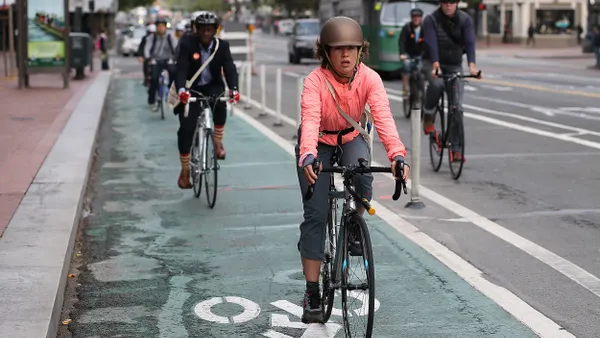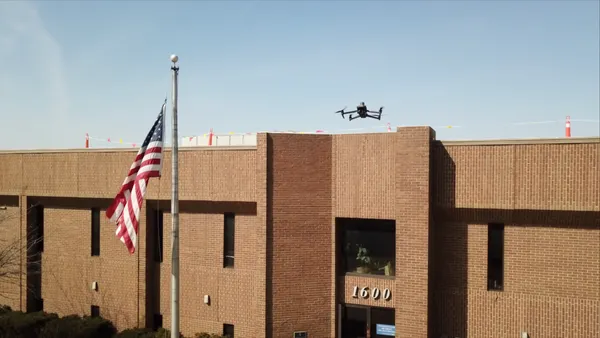Like nearly every organization around the globe, St. Joseph the Worker had to reimagine how it operated when the COVID-19 pandemic struck. The Phoenix, Arizona-based non-profit has spent the past 33-plus years pursuing a straightforward mission: To prepare and connect disadvantaged people in the Valley of the Sun to employers and jobs that allow them to live healthy and independent lives.
"We like to call it a prevention program because we are trying to prevent them from falling into the realms of poverty," said Rae Herrera, the non-profit's director of youth services. "We assist those experiencing homelessness and young people in finding employment and then provide them with all the tools and resources they need to help them get on their feet once they have secured employment."
Before the pandemic started, St. Joseph the Worker teamed up with Dress for Success Phoenix to launch the Teen Workforce Initiative (TWI). It was a way to focus particular attention on helping teens and young adults prepare for employment. In Arizona, about nine percent of 16 to 24-year-olds are unemployed or not attending school.
The best way to engage young people and inform them of TWI’s resources – which range from resume support and job coaching to interview preparation and transportation assistance – has been to hold in-person workshops at schools. But the pandemic upended that entire approach. "It was really hard to reach youth because we couldn’t get into schools," said Herrera.
If anything, though, the need for the types of services and support TWI provides became more acute during the pandemic. To help address this need, Herrera and her colleagues came up with a new idea about how to reach and engage those it was dedicated to support. "A lot was being done virtually and that is where the idea of an app came from," said Herrera. "As we know, most young people have a phone, and they are always on their phones."
Having the idea to create an app was just that, an idea. But designing and building an app that would appeal to digitally-savvy young people was not something that St. Joseph the Worker had the experience and resources to do. "Our budget goes towards those hands-on resources our clients need for work, like transportation and other tools," said Herrera. "Technology has not been a big part of the budget for client resources."
Because the non-profit understood that a well-designed app could help it better serve its clients, St. Joseph the Worker teamed up with Amazon Web Services (AWS). These organizations came together to collaborate at the ASU Smart City Cloud Innovation Center (CIC), a partnership between ASU and AWS that was launched in 2019 to harness the university's research excellence and AWS cloud, technology, and innovation expertise to tackle the region’s most pressing challenges.
To Jason Whittet, the AWS digital innovation lead at the ASU Smart City Cloud Innovation Center, this collaborative approach was a unique opportunity to translate the non-profit’s understanding of the community and its needs into a solution that makes a tangible difference in people’s lives. "Saint Joseph has so many years of experience working with the greater Phoenix community, and organizations like this don’t always have a huge technology past or budget. But they have amazing ideas to create tangible impact," said Whittet. "What was so exciting about this project was to be able to overlay technology to help them expand their reach and impact beyond what they can do with in-person events."
The process involved with developing the app followed Amazon's Working Backwards process, which is used to develop the company's own products. The process begins by deeply understanding human (i.e. customer) needs and works backwards from those to create the right solution to address those challenges. In this case, it involved bringing together ASU, St. Joseph the Worker, a range of other community stakeholders, and AWS in a workshop to develop a vision for what the app should achieve.
From that initial workshop, ASU students who work at the ASU Smart City CIC, Nilo Exar and Sarah Vue, got to work developing an app wireframe, which illustrates how the app will look and function. Exar and Vue followed an agile development approach, meaning they checked in with workshop participants every two weeks to share their direction and ideas.
For Exar, that continuous feedback and always remembering who the app was designed to help were important in guiding their efforts. "We always tried to remember who is going to use the app, and is it going to be effective for them?" said Exar. "We all interact with apps on a daily basis, and I think we all know what looks good, even if it’s subconsciously. The ability to work together through the ASU Smart City CIC and to communicate back and forth about what worked and what didn’t only makes the app stronger."
Once the app wireframe was developed and given to St. Joseph the Worker by the ASU Smart City CIC, St. Joseph’s hired AWS Consulting Partner Patagonian to build the app for implementation.
To appeal to youth, the team determined that the TWI app should incorporate rewards for points earned by completing certain activities on the app. For instance, users can receive gift cards for studying interview questions, signing up for job fairs and training sessions, and other actions. As important as it was to provide incentives to get young people to use the app, what’s far more beneficial is the collection of resources that are easily accessible to anybody with a smartphone. Job openings that have been vetted for suitability and safety are available on the app along with resources about how to search for work, how to build and submit resumes and applications, as well as education about the soft skills necessary to flourish in the work world.
The app will be available to anyone that has a smart phone in the United States in January 2022. The team hopes to reach at least a minimum of 4,000 youth 16 years old+ in the first year and help them not only enter jobs, but also build job skills like creating a resume.
"The ability to reach thousands of youth is exciting, as our whole focus is to reach and prepare them for the workforce," said Herrera. "We are currently serving Maricopa County. But our ideal would be to serve all youth in Arizona and then eventually all of the United States and then the world. We want to reach as many youth as possible, and we know that is feasible with this app as a result of our collaboration with the ASU Smart City CIC and AWS."
To learn more about the Teen Workforce Initiative and stay tuned for the launch of the app, visit the ASU Smart City Cloud Innovation Center website.










